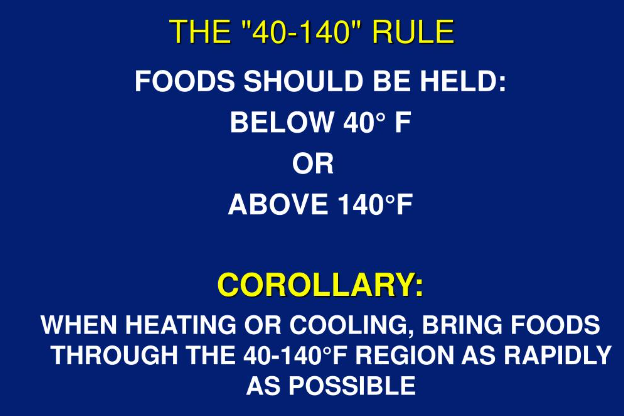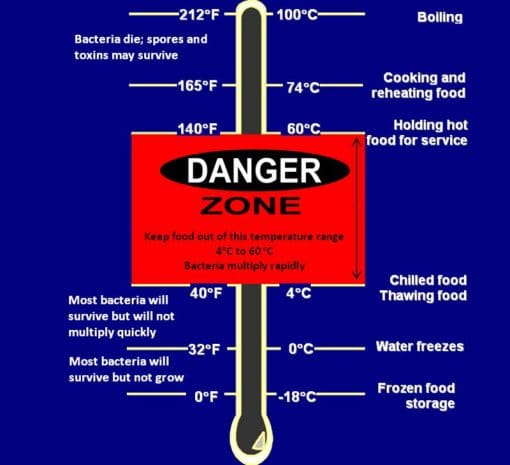The 4-40-140 Rule: Understanding Food Safety Temperatures for Proper Handling and Cooking
Food safety is of utmost importance when it comes to handling and cooking perishable items. One critical aspect of food safety is understanding the 4-40-140 rule, which outlines specific temperature guidelines for proper food handling. In this article, we will explore the 4-40-140 rule in detail, discussing its significance, application, and the role it plays in keeping our food safe from harmful bacteria.

4-40-140 rule
1. What is the 4-40-140 Rule?
The 4-40-140 rule is a set of temperature guidelines that aim to prevent bacterial growth and ensure food safety.
The rule states that food should be kept at temperatures below 40°F (4°C) for refrigeration, above 140°F (60°C) for hot holding, and cooked to a minimum internal temperature of 140°F (60°C) to destroy any harmful bacteria.
2. Importance of Proper Refrigeration (Below 40°F/4°C):
Keeping perishable foods below 40°F (4°C) is crucial to slow down bacterial growth.
Refrigeration helps maintain the freshness and quality of foods, preventing the growth of pathogens that can cause foodborne illnesses.
It's important to store foods promptly in the refrigerator and monitor the temperature to ensure it stays within the safe range.
3. Hot Holding (Above 140°F/60°C):
Hot holding refers to keeping cooked food at temperatures above 140°F (60°C) to prevent the growth of bacteria.
This temperature range inhibits the growth of harmful microorganisms that can multiply rapidly at warmer temperatures.
When serving hot food, it's essential to use heating equipment or chafing dishes to maintain the proper temperature for safe consumption.
4. Cooking to a Minimum Internal Temperature of 140°F/60°C:
Cooking food to a minimum internal temperature of 140°F (60°C) is critical to eliminate harmful bacteria and ensure food safety.
Different types of food require specific internal temperatures for proper cooking. Using a food thermometer is the most reliable way to determine if the food has reached the desired temperature.
Meats, poultry, and seafood often have higher temperature requirements to ensure they are fully cooked and safe to eat.
5. Application of the 4-40-140 Rule:
The 4-40-140 rule is applicable to various aspects of food handling, including storage, transportation, cooking, and serving.
Adhering to these temperature guidelines helps reduce the risk of foodborne illnesses and ensures that food is safe for consumption.
It is especially important to follow these guidelines when dealing with potentially hazardous foods such as meat, dairy products, and cooked dishes that are prone to bacterial growth.
6. Additional Food Safety Practices:
While the 4-40-140 rule provides valuable temperature guidelines, it's essential to complement themwith other food safety practices.
These include proper handwashing, avoiding cross-contamination, storing raw and cooked foods separately, and practicing good hygiene in the kitchen.
These practices work in conjunction with temperature control to maintain food safety and prevent the spread of foodborne pathogens.

Temperature danger zone
Understanding and implementing the 4-40-140 rule is crucial for ensuring food safety and preventing foodborne illnesses. By keeping perishable foods below 40°F (4°C) for refrigeration, above 140°F (60°C) for hot holding, and cooking them to a minimum internal temperature of 140°F (60°C), we can protect ourselves and others from harmful bacteria. Remember to follow additional food safety practices alongside temperature control to maintain the highest standards of food hygiene.